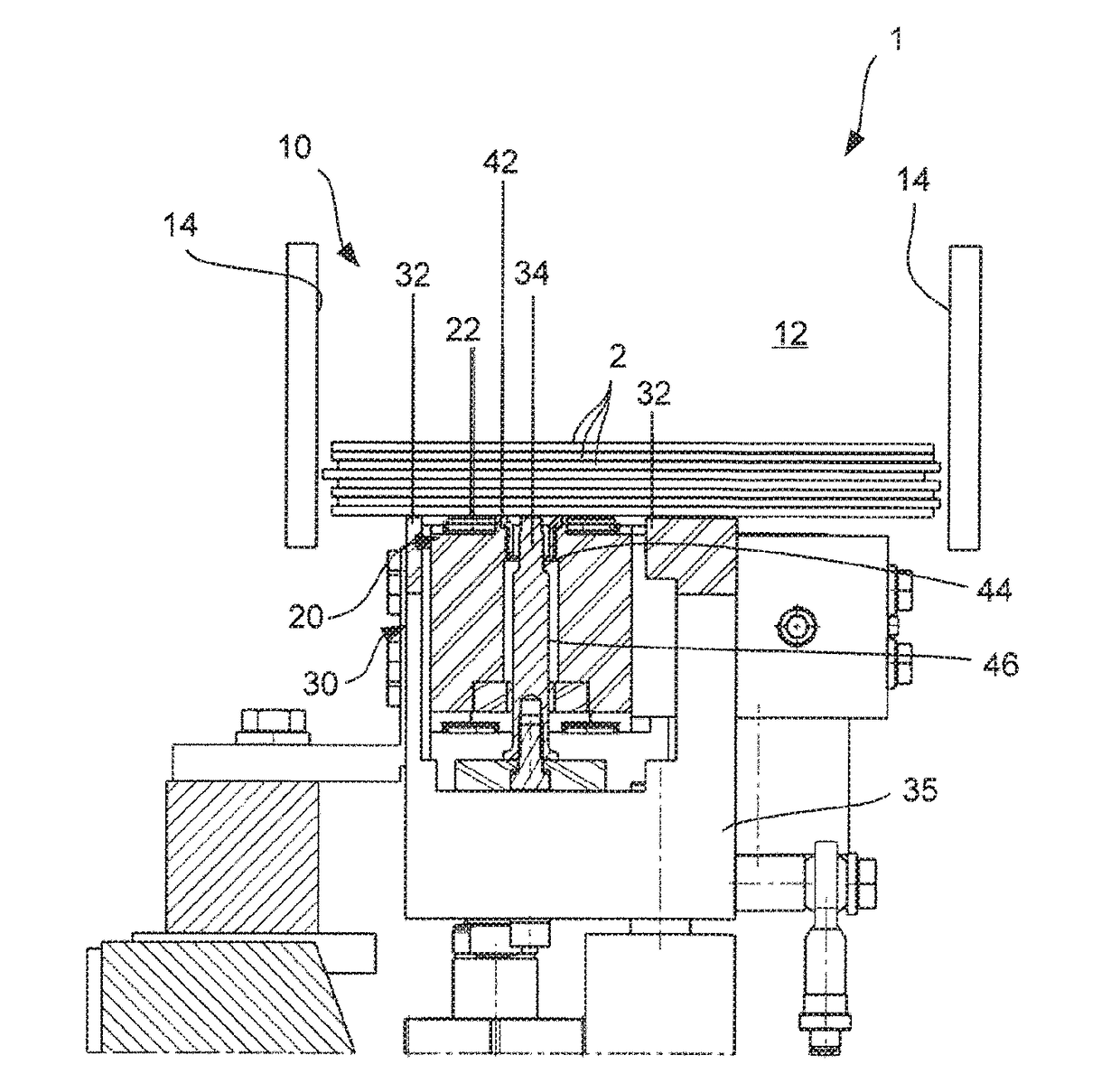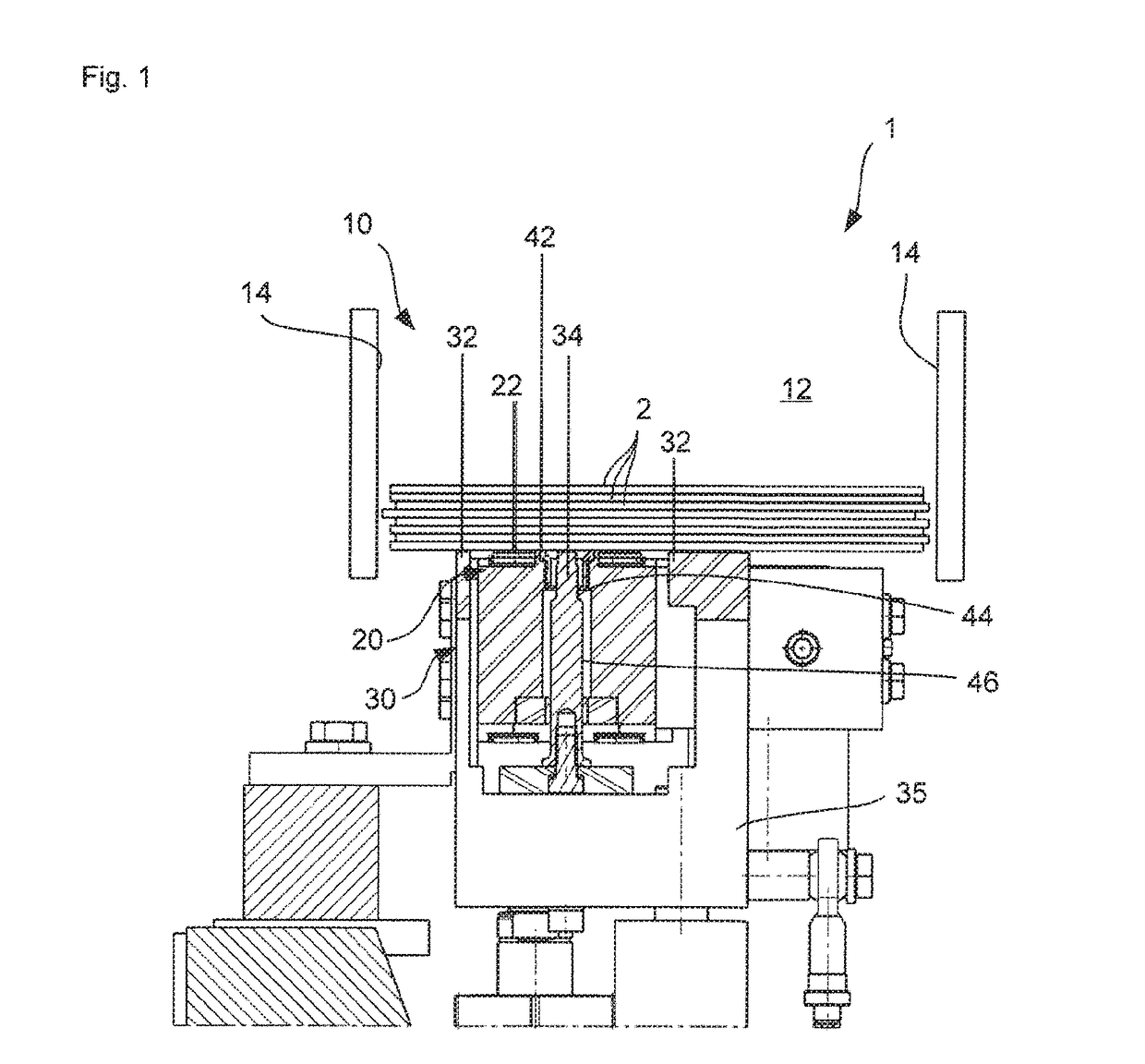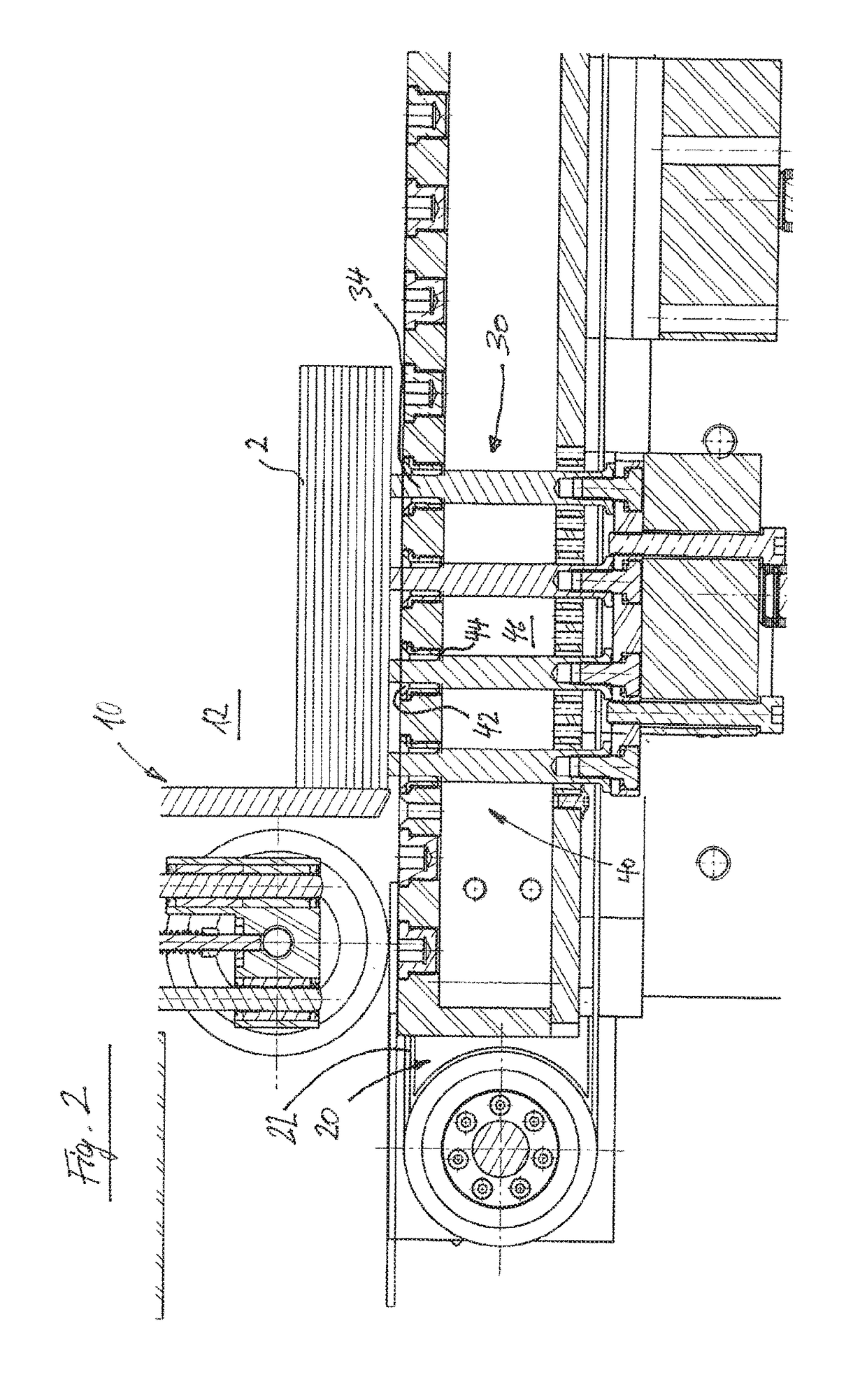Apparatus for separating workpieces
a workpiece and apparatus technology, applied in metal-working apparatus, de-stacking articles, thin material processing, etc., can solve the problems of inability to achieve desired separation, insufficient achievable cycle output for modern machining devices, and limited efficiency of systems, so as to reduce the energy input required, save considerable amounts of energy, and control the negative pressure operation of the suction device
- Summary
- Abstract
- Description
- Claims
- Application Information
AI Technical Summary
Benefits of technology
Problems solved by technology
Method used
Image
Examples
Embodiment Construction
[0046]Preferred embodiments of the invention will be described in the following with reference to the associated drawings.
[0047]An apparatus 1 for separating workpieces according to a preferred embodiment of the invention is illustrated schematically in various sectional views in FIGS. 1 to 3. The apparatus 1 is used to separate workpieces 2 which can consist, for example, of wood, wood-based materials, plastic or the like. The apparatus 1 is particularly suitable for comparatively flexible workpieces, such as panels for covering floors or walls in particular. However, in principle any workpieces can be separated.
[0048]Although not shown in the figures, the separating apparatus 1 can advantageously be part of a machining device for machining workpieces, said machining device having, for example, a milling unit, drilling unit, sawing unit or a variety of other machining units.
[0049]The separating apparatus 1 initially has a workpiece magazine 10, a stack of workpieces 2 being arrange...
PUM
 Login to View More
Login to View More Abstract
Description
Claims
Application Information
 Login to View More
Login to View More - R&D
- Intellectual Property
- Life Sciences
- Materials
- Tech Scout
- Unparalleled Data Quality
- Higher Quality Content
- 60% Fewer Hallucinations
Browse by: Latest US Patents, China's latest patents, Technical Efficacy Thesaurus, Application Domain, Technology Topic, Popular Technical Reports.
© 2025 PatSnap. All rights reserved.Legal|Privacy policy|Modern Slavery Act Transparency Statement|Sitemap|About US| Contact US: help@patsnap.com



